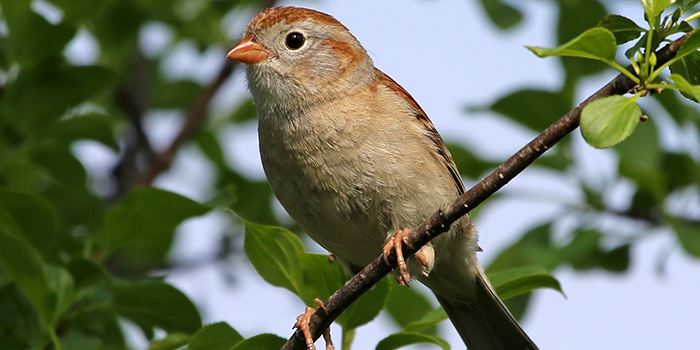Caution: Birds Ahead

By Karen Menard
When you visit the Metroparks during the spring and summer, keep in mind that many birds are sitting on nests as you pass them by on the trails or by boat. Birds and their nests are often quietly camouflaged or hidden in the grasses, wetland vegetation, or small shrubs. Numerous species of birds choose Metroparks to call “home,” during the summer months, due to the fact that these natural areas offer abundant food and excellent habitat.
Many of these birds migrate hundreds to thousands of miles twice a year between their summer home in the Metroparks and their winter home in the southern United States or even Central and South America! Many of these species only spend approximately 30% of their year in northwest Ohio to nest, and then migrate right back to their wintering grounds. It has been documented that some birds return every year to the very same nesting areas in northwest Ohio. As trail users, we often share these same, special habitats with nesting birds. Surprisingly, many nest on the ground (well camouflaged), very close to the trail edges.
During the months of May, June, and July, nesting season is occurring. Stepping off trails can flush birds out of their nests and may also cause nest failure or harm to young birds. Metroparks asks all park users to be more sensitive than usual to ground nesting birds when on the trails. Please follow the tips below so that these birds will have a successful breeding season:
- If there are signs noting an area is “Closed” during nesting season, please use another trail or view birds from the edge of the area. Areas in Oak Openings Preserve Metropark are closed in May and June to protect the nesting lark sparrow, an endangered bird in Ohio, as well as other declining breeding birds. Certain areas at Howard Marsh are also closed if birds are nesting.
- Stay in the middle of the trails when walking a dog or taking nature photos in open areas.
- Do not step off of the trail, as birds often nest right along the edges.
- Keep your distance if you see a nest or young birds just leaving the nest.
Did You Know?
There are over 30 species of ground nesting birds that use wetland, forest, prairie, dune, savanna, and meadow habitats maintained by Metroparks? Many species of migratory songbirds like the veery, common yellowthroat, and indigo bunting, use low shrubbery, as well. Quality nesting sites produce ample food sources and desired habitat, which attracts species year after year.
---
Pictured: Field Sparrow (ground nesting bird); stock photo